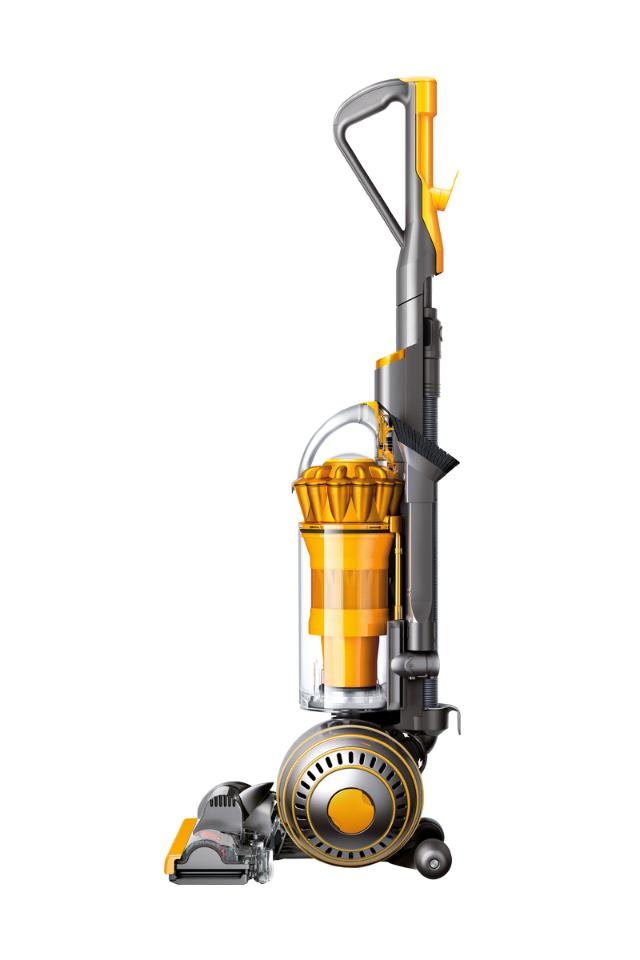Dyson vacuum cleaners are popular for their performance and innovative design. Yet, even the best machines can face issues.
If you’re experiencing problems with your Dyson vacuum ball, you’re not alone. Many users encounter common issues that can be fixed easily. Understanding these problems and their solutions can save you time and frustration. This guide will help you troubleshoot your Dyson vacuum ball, ensuring it operates efficiently.
From suction problems to strange noises, we will cover the most frequent issues. Follow along to keep your vacuum running smoothly and extend its lifespan. Let’s dive into the world of Dyson vacuum ball troubleshooting.

Credit: www.dyson.com
Introduction To Dyson Vacuum Ball
Dyson vacuum cleaners are famous for their unique design and powerful performance. The Dyson Vacuum Ball is one of these innovative models. Its distinctive ball design helps in easy movement around your home. This blog post will guide you through the key features and common issues related to the Dyson Vacuum Ball.
Key Features
The Dyson Vacuum Ball comes with several impressive features that make it stand out:
- Ball Technology: This allows for smooth steering and easy navigation.
- HEPA Filtration: Captures allergens and improves air quality.
- Powerful Suction: Ensures deep cleaning on various floor types.
- Self-Adjusting Cleaner Head: Automatically adjusts to different surfaces.
Common Issues
Even with its high quality, the Dyson Vacuum Ball can face some common issues. Here are a few and how to address them:
| Issue | Possible Cause | Solution |
|---|---|---|
| Loss of Suction | Clogged filters or blockages | Clean filters and check for blockages |
| Strange Noise | Obstruction in the brush bar | Remove and clean the brush bar |
| Overheating | Blocked airflow | Ensure all vents are clear |
Addressing these issues can help keep your Dyson Vacuum Ball running smoothly. Regular maintenance is key to ensuring optimal performance. Always refer to the user manual for specific troubleshooting steps.
Identifying Problems
Troubleshooting Dyson vacuum ball problems involves checking for blockages and ensuring the ball’s movement is not restricted. Regular maintenance helps prevent common issues and keeps your vacuum running smoothly.
A Dyson vacuum ball is a powerful tool. But it can run into issues. Identifying problems early can save you time and money. Here are some common problems you might face.
Unusual Noises
Your Dyson vacuum should run smoothly. If it starts making strange noises, something is wrong. Check for blockages in the hose. Remove any debris. Look at the brush bar. It could be tangled with hair or string. Clean it thoroughly.
Listen for rattling sounds. This might mean loose parts. Tighten any screws or connections. If you hear grinding, the motor could be failing. This may need professional repair.
Loss Of Suction
A vacuum with low suction is frustrating. Start by checking the filter. A dirty filter can block airflow. Clean or replace it as needed. Examine the hose for clogs. Clear any obstructions you find.
The dustbin might be full. Empty it to restore suction power. Also, inspect the seals. Damaged seals can cause air leaks. Replace them if necessary.
By identifying these problems, you can keep your Dyson vacuum running well. Regular maintenance prevents many issues. Keep your vacuum clean and check it often.
“`
Basic Troubleshooting Steps
Experiencing issues with your Dyson Vacuum Ball? Don’t worry. Basic troubleshooting steps can solve many common problems. Follow these simple tips to get your vacuum working again.
Checking Filters
Start by checking the filters. Dirty filters can reduce suction power. Remove the filters and rinse them under cold water. Let them dry completely before putting them back. Clean filters ensure better performance.
Inspecting The Hose
Next, inspect the hose for clogs or damage. Detach the hose and look inside. Remove any blockages you find. Check for holes or tears in the hose. A damaged hose can affect suction. Replace it if needed.

Credit: www.reddit.com
Advanced Troubleshooting Techniques
Dyson vacuums are known for their strong suction and advanced technology. Yet, like any device, they may face issues over time. This section will guide you through some advanced troubleshooting techniques. These techniques will help you fix common problems with your Dyson vacuum ball.
Examining The Ball Mechanism
The ball mechanism is crucial for the vacuum’s mobility. If it stops working, your vacuum becomes hard to move. First, check for debris. Dirt and hair can get stuck in the ball. This can cause it to jam. Use a small brush to clean it.
Next, inspect the ball’s housing. Look for cracks or broken pieces. If you find any, you might need to replace the ball. Make sure to use genuine Dyson parts. This ensures the best performance.
Finally, ensure the ball is properly aligned. Misalignment can cause the vacuum to wobble. Adjust it until the vacuum moves smoothly.
Motor Issues
Motor issues can cause the vacuum to lose suction. This makes cleaning less effective. Start by checking the filters. Clogged filters can strain the motor. Clean or replace them as needed.
Next, listen to the motor. A loud or unusual noise could mean a problem. Turn off the vacuum and unplug it. Check for blockages in the hose and brush bar. Remove any obstructions you find.
Also, inspect the motor housing. Look for signs of overheating or burning. This could mean the motor is failing. If you see any damage, contact Dyson support. They can help you with repairs or replacements.
Finally, ensure the vacuum is not overheating. Overheating can damage the motor. Let the vacuum cool down between uses. Keep the airflow vents clear of dust and debris.
| Step | Action |
|---|---|
| 1 | Check for debris in the ball mechanism. |
| 2 | Inspect the ball’s housing for damage. |
| 3 | Ensure the ball is properly aligned. |
| 4 | Check and clean the filters. |
| 5 | Listen for unusual motor noises. |
| 6 | Inspect the motor housing for damage. |
| 7 | Prevent the vacuum from overheating. |
Cleaning And Maintenance Tips
Maintaining your Dyson Vacuum Ball ensures it runs efficiently and lasts longer. Regular cleaning and deep maintenance are essential. Follow these tips to keep your vacuum in top shape.
Regular Cleaning Routine
A regular cleaning routine is key to optimal performance. Set a weekly cleaning schedule.
- Empty the bin: Check and empty the bin after each use to prevent blockages.
- Clean the filters: Wash the filters with cold water every month. Let them dry for 24 hours.
- Check the brush bar: Remove hair and debris from the brush bar weekly.
- Inspect the hose: Check the hose for clogs and damage regularly.
Deep Cleaning Procedures
Deep cleaning your Dyson Vacuum Ball helps maintain its longevity. Perform deep cleaning every three months.
- Disassemble the vacuum: Remove the bin, filters, and brush bar.
- Wash the bin: Use mild detergent and warm water. Rinse thoroughly and let it dry.
- Clean the cyclone: Use a soft brush to clean dust and debris from the cyclone.
- Check the ball: Wipe the ball and ensure it moves smoothly. Remove any trapped dirt.
- Reassemble the vacuum: Ensure all parts are dry before reassembling.
By following these cleaning and maintenance tips, your Dyson Vacuum Ball will perform at its best.

Credit: www.youtube.com
Replacing Parts
Maintaining your Dyson vacuum is essential for its efficiency. Over time, parts may wear out and need replacing. Here, we will guide you through the process of replacing the most common parts.
Filter Replacement
The filter is crucial for your Dyson vacuum’s performance. A clogged filter can reduce suction power. Follow these steps to replace it:
- Turn off and unplug the vacuum.
- Locate the filter housing, usually near the cyclone assembly.
- Remove the old filter by pulling it out.
- Insert the new filter, ensuring it fits snugly.
- Close the filter housing securely.
Replace the filter every 3-6 months for optimal performance.
Hose And Attachments
The hose and attachments are vital for your vacuum’s versatility. If they become damaged, replace them as follows:
- Disconnect the damaged hose from the main unit.
- Attach the new hose to the same connection point.
- Ensure all attachments fit properly on the new hose.
Regularly check the hose for wear and tear. Replace attachments if they show signs of damage.
Keeping your Dyson vacuum in top condition ensures it works efficiently and lasts longer. Regular maintenance and timely part replacements are key.
When To Seek Professional Help
Dyson vacuum cleaners are known for their innovative design and efficiency. Sometimes, even the best machines need expert care. Knowing when to seek professional help can save you time and stress. This section will help you understand the signs and how to find a certified technician.
Signs It’s Time
Your Dyson vacuum might show signs of needing professional attention. If it loses suction power, it could be a sign of a deeper issue. Strange noises are another red flag. These noises might indicate a problem with the internal parts. If your vacuum overheats, turn it off immediately. Overheating can signal motor problems. Also, if it keeps shutting off, this might point to electrical faults. Lastly, persistent bad smells can mean there are clogs or part damage.
Finding A Certified Technician
Finding a certified technician is crucial for proper repair. Certified technicians have the training to handle Dyson vacuum issues. Start by checking the Dyson website for authorized service centers. You can also read reviews online to find reputable repair shops. Ensure the technician has experience with Dyson models. Ask about their certification and repair process. This will help you feel confident in their skills.
Certified technicians use genuine Dyson parts for repairs. This ensures your vacuum runs smoothly after the fix. Avoid unqualified repair services. They might use low-quality parts, leading to more issues. Trust only certified technicians for the best results.
Preventative Measures
Preventative measures can help ensure your Dyson vacuum ball operates efficiently for a long time. By following proper usage tips and practicing long-term care, you can avoid common issues and extend the life of your vacuum. These measures can save you time, money, and frustration.
Proper Usage Tips
Use your Dyson vacuum on the correct floor type setting. This helps maintain suction and prevents wear. Avoid vacuuming large debris that can clog the machine. Small items like coins or large pieces of paper can cause blockages. Always check the vacuum’s manual for instructions specific to your model.
Empty the dust bin regularly. A full bin can reduce suction power. Make sure to clean the filters as instructed. Dirty filters can also impede performance. Use the vacuum for its intended purposes. Do not use it to pick up water or other liquids.
Long-term Care
Regular maintenance keeps your Dyson vacuum in top shape. Clean the brush bar to remove hair and other debris. This helps the vacuum pick up dirt effectively. Check for blockages in the hose and other parts. Clear any obstructions to ensure smooth operation.
Inspect the power cord for any damage. Replace it if you find any cuts or frays. Store the vacuum in a dry place. Avoid leaving it in a damp environment, which can cause damage. Keep the vacuum in a cool area to prevent overheating. Regularly check for wear and tear on all parts.
Frequently Asked Questions
Why Is My Dyson Vacuum Losing Suction?
Check for blockages in the hose, filters, and brush bar. Clean or replace if necessary.
How Do I Clean The Dyson Ball Filter?
Remove the filter, rinse with cold water, and let it dry completely before reinserting.
Why Is My Dyson Vacuum Making Loud Noises?
Loud noises can be due to blockages, a tangled brush bar, or worn-out parts.
How Often Should I Replace The Dyson Vacuum Filter?
Replace the filter every 6-12 months for optimal performance.
What Should I Do If The Dyson Vacuum Won’t Turn On?
Check the power cord, plug, and fuse. Ensure the vacuum is properly assembled.
Conclusion
Troubleshooting your Dyson vacuum ball can be straightforward with the right steps. Regular maintenance ensures it performs well. Clean filters and check for blockages often. Replace damaged parts promptly. These small actions can save you from bigger issues. Keep your vacuum running smoothly.
Enjoy a cleaner home with less effort. Follow these tips and enjoy a hassle-free experience. Your Dyson vacuum will thank you. Happy cleaning!




